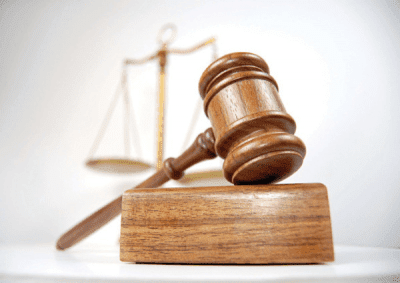America’s most powerful business lobby has taken the Trump administration to court over a controversial immigration policy that could reshape how companies access global talent. The US Chamber of Commerce filed suit Thursday in Washington federal court, arguing that a newly imposed $100,000 fee on skilled worker visas crosses legal boundaries and threatens businesses across the country.
The lawsuit, filed in the US District Court for the District of Columbia, alleges that President Donald Trump’s September executive order establishing the steep H-1B visa charge violates the Immigration and Nationality Act. It’s the Chamber’s first legal confrontation with the administration this presidential term, signaling just how seriously corporate America views the policy shift.
Neil Bradley, the Chamber’s chief policy officer, didn’t mince words about the stakes. The new fee structure would prove cost-prohibitive for employers, he warned, particularly hitting startups and smaller enterprises hardest. These companies rely on the H-1B program to bring specialized talent into the United States when domestic workers with those specific skills simply aren’t available.
The program currently allows up to 85,000 foreign nationals annually to work temporarily in specialty occupations requiring at least a bachelor’s degree, with costs previously running under $3,600 per application. Trump’s order multiplies that figure nearly thirtyfold, a jump the Chamber says forces businesses into an impossible choice: dramatically inflate labor expenses or forgo hiring highly skilled employees altogether.
The timing stings for an organization that has otherwise praised Trump’s economic agenda. In the same breath as announcing litigation, Bradley commended the administration’s work on tax reform, energy policy, and reducing regulatory burdens. Yet on this issue, there’s no room for compromise. The lawsuit contends that Congress carefully calibrated visa program fees and that Trump’s proclamation “blatantly contravenes” those congressional determinations.
Technology giants dominate H-1B usage, though the program extends beyond Silicon Valley. Amazon leads all companies with over 10,000 H-1B employees hired between 2009 and June 2025, followed by Microsoft with more than 5,000 and Meta with a similar number. But doctors, teachers, and other professionals also secure positions through the visa pathway, adding complexity to claims that the program primarily benefits tech corporations.
The administration isn’t backing down. White House spokesperson Taylor Rogers characterized the fee as lawful and a necessary first step toward reforming what officials describe as an abused system. The policy aims to discourage companies from what the White House calls “spamming the system and driving down American wages”, ensuring employers genuinely need foreign workers rather than using them to undercut domestic salaries.
Commerce Secretary Howard Lutnick has defended the charge even more forcefully, suggesting companies should evaluate whether individual foreign workers justify $100,000 annual government payments. If not, those positions should go to Americans instead, he’s argued, framing the fee as a filter that separates genuine talent needs from cost-cutting exercises.
The majority of H-1B visa approvals go to workers from India, representing nearly three-quarters of successful applications. That demographic reality adds another layer to debates about American competitiveness, immigration policy, and whether restricting visa access protects or harms the domestic workforce.
This isn’t the only legal challenge confronting Trump’s visa policy. Earlier this month, healthcare groups and labor unions filed their own lawsuit questioning the fee’s legality, suggesting broader resistance beyond the business community.
The Chamber represents nearly three million American companies, giving its lawsuit considerable weight. Yet the organization initially struggled to find member companies willing to publicly join the litigation, ultimately filing alone after polling members about their willingness to demonstrate legal standing through documented harm.
The case now lands before federal judges who must determine whether presidential authority over immigration extends to essentially rewriting visa fee structures established by Congress. How courts resolve that question could influence not just H-1B policy but the broader balance between executive action and legislative intent.
For businesses wrestling with talent shortages in specialized fields, the lawsuit’s outcome carries immediate consequences. And for the thousands of foreign workers hoping to build careers in America, it represents yet another uncertainty in an immigration system that seems perpetually in flux.
Source: newsghana.com.gh











